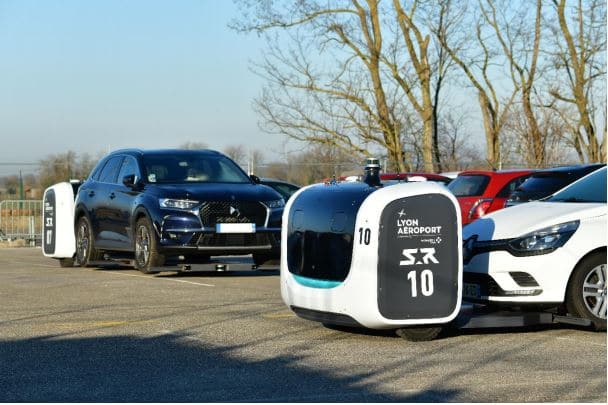


Following a successful trial involving 500 parking spaces at Lyon Airport, VINCI Airports has agreed to extend the outdoor robotic parking service deployed by Stanley Robotics.
Under the new agreement the innovative car parking solution will be expanded to cover 2,000 spaces in summer 2020. Ultimately the plan is to offer more than 6,000 spaces.
A world first in terms of innovation, Stanley Robotics service will be run by seven autonomous robots working simultaneously, while 28 cabins will be available for dropping off and collecting vehicles. Alongside providing an improved quality of service for passengers parking at the airport, the new agreement is in line with the sustainable development targets set by the airport.
Passengers no longer waste time looking for free space or trying to locate their vehicle on their return. They simply book their parking space online ahead of their arrival at the airport, leave their vehicle in a dedicated parking cabins and then make their way to the terminals using a shuttle bus. The robot takes care of the car, parking it in the secure car park. On their return the passenger then picks up their vehicle, which is waiting for them in one of the cabins. Emissions are therefore reduced as there is no more time wasted driving around looking for a free space or trying to locate a vehicle on a passenger’s return.
In addition, as cars are parked in dense blocks, the service also makes excellent use of space and reduces land use. In the future it will be possible to create 50% more spaces within the same surface area, with the ability to pack vehicles in closely and several layers deep. The robots being used are powered by an electric motor that doesn’t emit any CO2. For a one-year period and 2,000 parking spaces it is estimated that 100 tonnes of CO2 emissions will be avoided.
Since the service opened in 2016, 8,000 passengers have made use of the service with 95% of those who have used the service saying they would use it again. The robots have been busy having clocked up more than 2,000km of travel on site.





